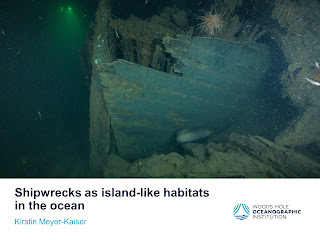Divinity Avenue
I stepped out of the Red Line train at Harvard Square and transited the rest of the way to my destination on foot: 16 Divinity Avenue. It's an awfully grandiose address, but then again, this is one of the places where life's mysteries are discerned. Come to think of it, the group's figurehead even trends toward godlike: he knows a lot of things, shows up in numerous places, and has a lot of power in the community. But even for such a high-and-mighty scientist, he knows who I am. It's one of the reasons I respect him so much. If you haven't figured it out already, my destination was Pete Girguis's lab at Harvard University. One of my collaborators (Craig McClain) is on sabbatical there right now, and we had a proposal to discuss. After navigating past the giant mural of the Alvin submersible in Pete's hallway, I found Craig in his third-floor office. We got straight to business: what could reviewers criticize about our proposal? What flaws would we highlig...


